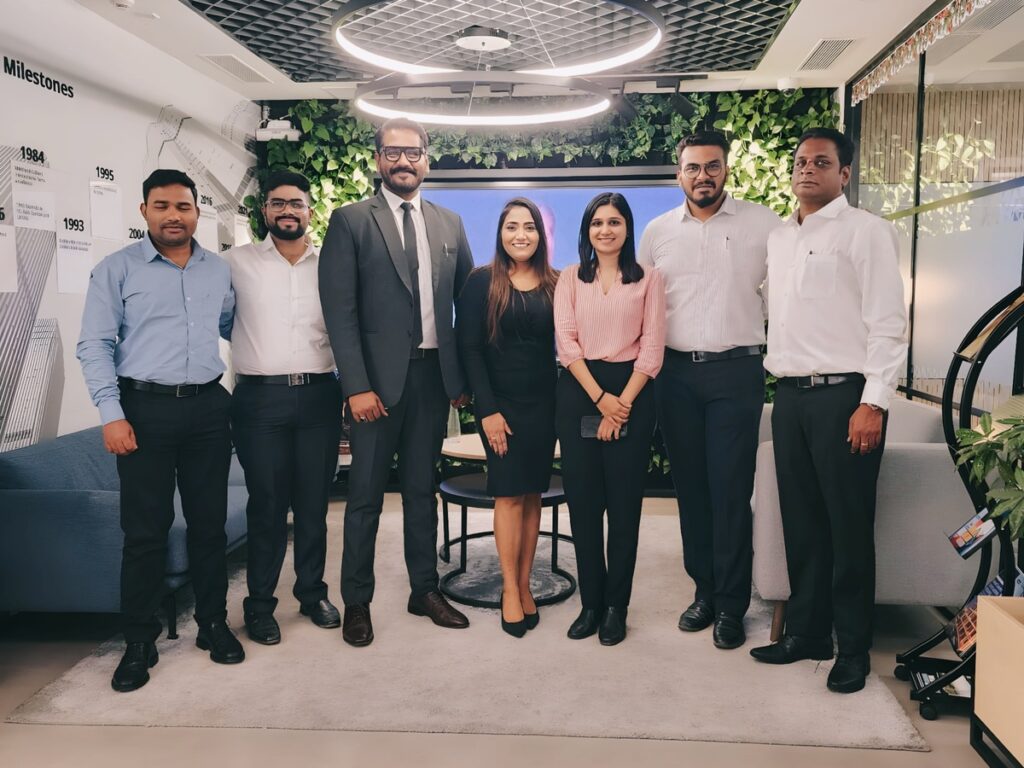Published
2 years agoon

The logistics sector in India is poised for substantial growth, with projections reaching USD 484.43 billion by 2029, as indicated in a report unveiled at the LogiMAT India 2024 fair. However, technology is playing key role in last mile connectivity in India. The Indian government and private players both are trying best to introduce new technologies for the betterment of Logistics sector.
In a compelling conversation with Neeraj Tiwari, correspondent for Marksmen Daily, Siddharth Shetty, Senior Associate Director and City Head at Colliers International, delves into the transformative impact of advanced technologies on India’s supply chain and logistics sector. Shetty sheds light on how AI, IoT, digital platforms, and infrastructural enhancements are fostering efficiency, transparency, and cost reduction within the industry.
How has the adoption of advanced technologies like AI and IoT improved efficiency in India’s supply chain and logistics sector?
Advanced technologies like AI and IoT have significantly revolutionised India’s supply chain and logistics sector. AI enhances demand forecasting by analysing vast datasets to uncover hidden patterns. It improves visibility and traceability, allowing real-time tracking of supplies across the logistics network. For example, AI can optimise shipping routes by monitoring weather and traffic conditions, thereby reducing delays.
In the cement industry, IoT-enabled asset tracking offers real-time insights into the condition and performance of vehicles and equipment. AI-powered predictive maintenance systems forecast failures and suggest repairs to prevent unplanned downtime. Together, AI and IoT optimised processes, reduce costs, and enhance resilience against disruptions.
In what ways have digital platforms and e-commerce influenced the management and optimisation of supply chains in India?
Digital platforms and e-commerce have profoundly impacted supply chain management and optimisation:
How are real-time tracking systems and GPS technology enhancing transparency and reducing delays in India’s logistics operations?
Real-time tracking systems and GPS technology provide accurate, up-to-date information on the location and status of goods, enabling better operational decisions. They help optimize routes and schedules, reduce idle time and fuel consumption, mitigate theft and loss risks through alerts, and improve overall supply chain efficiency. These technologies also enhance customer satisfaction by providing accurate shipment updates.
How have technological advancements in warehousing, such as automation and robotics, contributed to reducing operational costs and improving inventory management in India?
Automation and robotics have significantly reduced operational costs and improved inventory management in India. Automation streamlines tasks like picking, packing, sorting, and shipping, leading to cost reductions and increased safety. These technologies enhance efficiency, reduce manual errors, and speed up order fulfilment. AI and machine learning enable real-time data-driven decisions, optimizing inventory management and order processing. The Indian warehousing industry has grown by adopting these technologies, increasing efficiency, productivity, and safety.
What kind of infrastructure is required for last-mile connectivity in India?
Specialized infrastructure is crucial for enhancing last-mile connectivity in India’s logistics sector. The essential infrastructural needs include:



Why AI-Driven Video Solutions Are the Next Competitive Edge for Enterprises


How India Ubered in 2025 – Everyday travel, extraordinary scale


Dr. Lal PathLabs launches SOVAAKA — a next-generation wellness centre blending science, technology, and personalized care


Meet the former tempo driver set to rule the skies with Shankh Air


The silent, stony guardians of Idar


CredAble and Citi announce a global tech partnership to digitise trade finance and e-invoice validation

